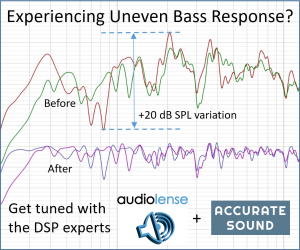greg90
Member
Thread Starter
- Joined
- Apr 3, 2024
- Posts
- 53
More
- Preamp, Processor or Receiver
- Onkyo TX-NR7100
- Additional Amp
- Crown XLS 2502
- Subwoofers
- SI HT 18
- Other Speakers
- Minidsp 2x4HD
I have a receiver that has a license for Dirac live so I wanted to use that to calibrate my mains. I also have a minidsp 2x4hd that I’m going to use for my subs and was planning on using REW for that. I’m not sure how to go about tuning this together. Mains and subs separate with two different programs or is there and easier way? I can’t find a straight answer. Newer to the home a/v coming from a car audio background













